
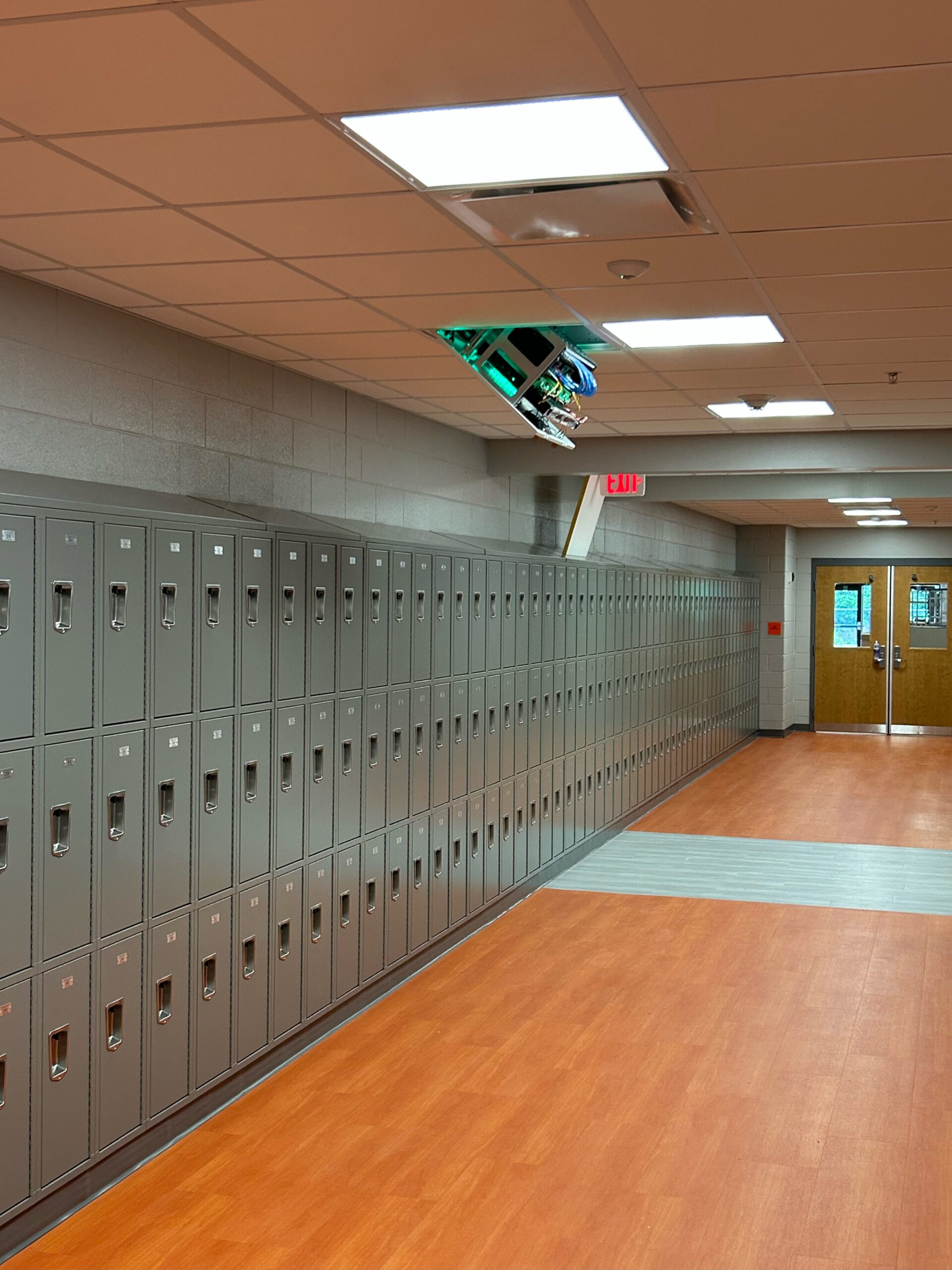



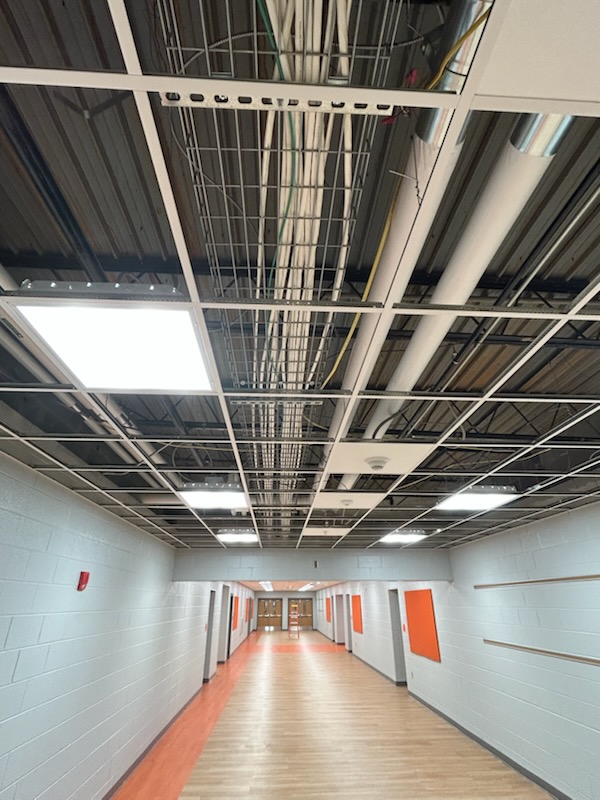
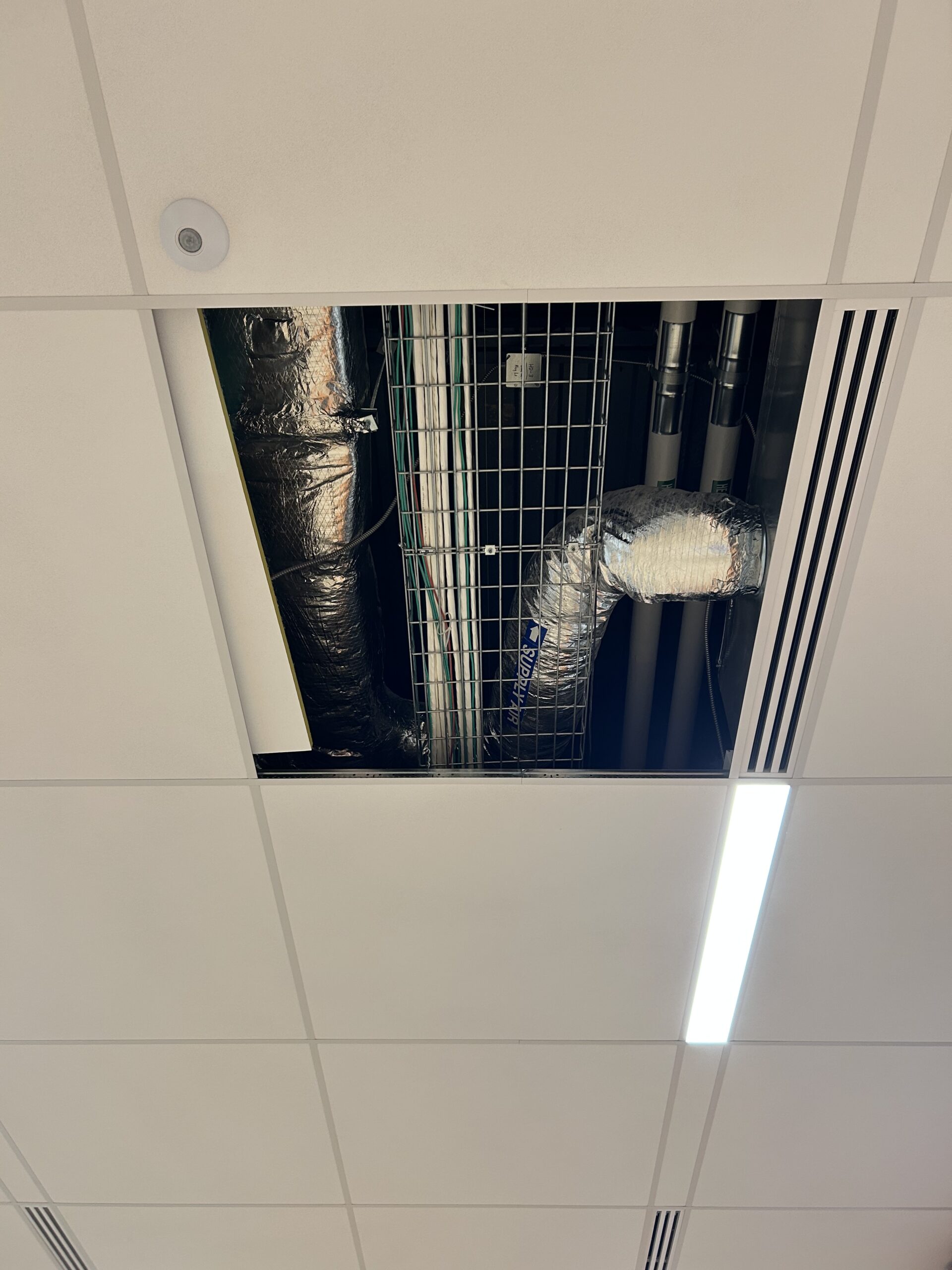

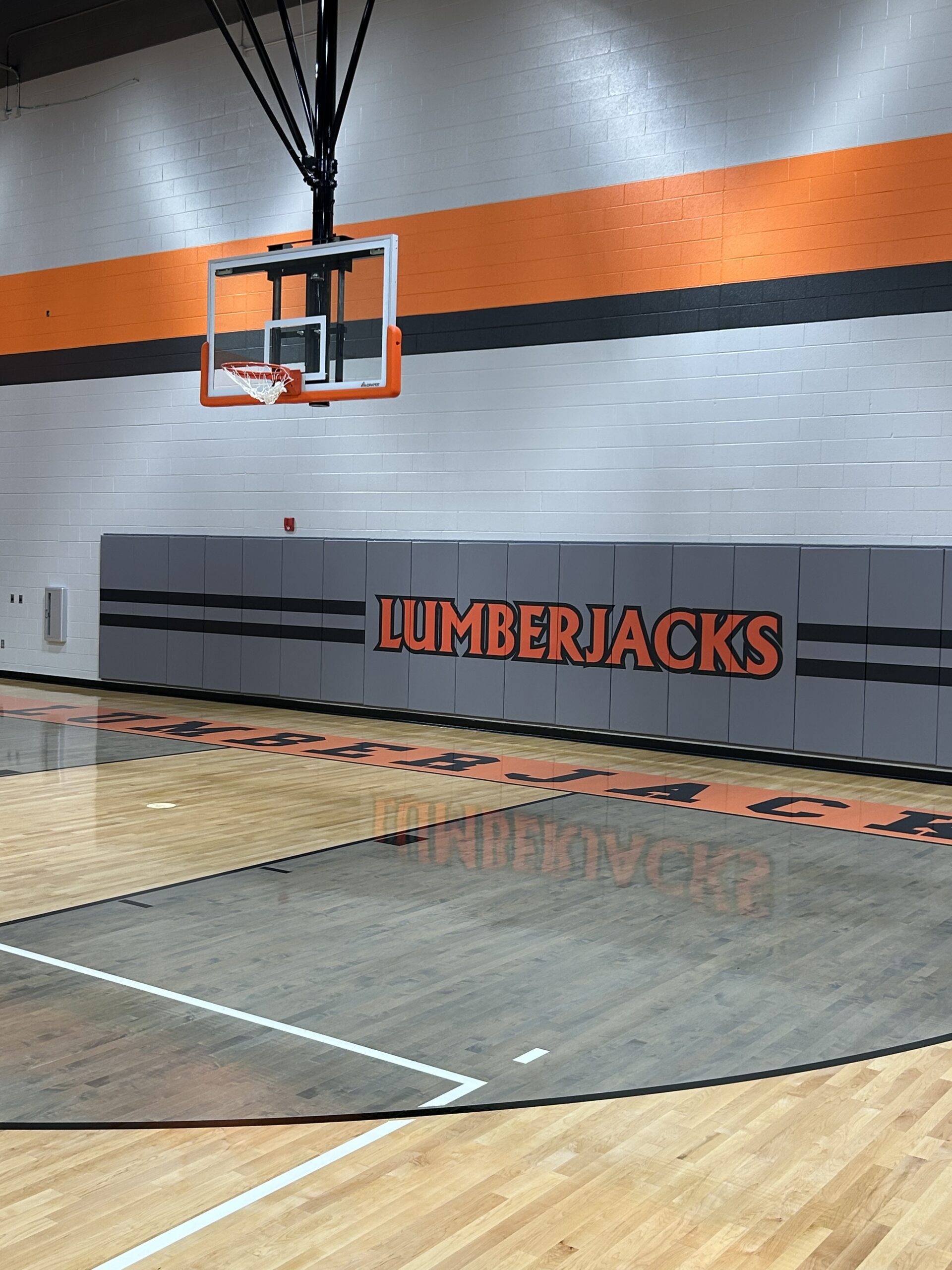
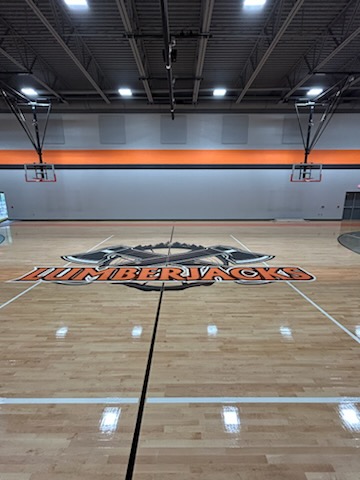
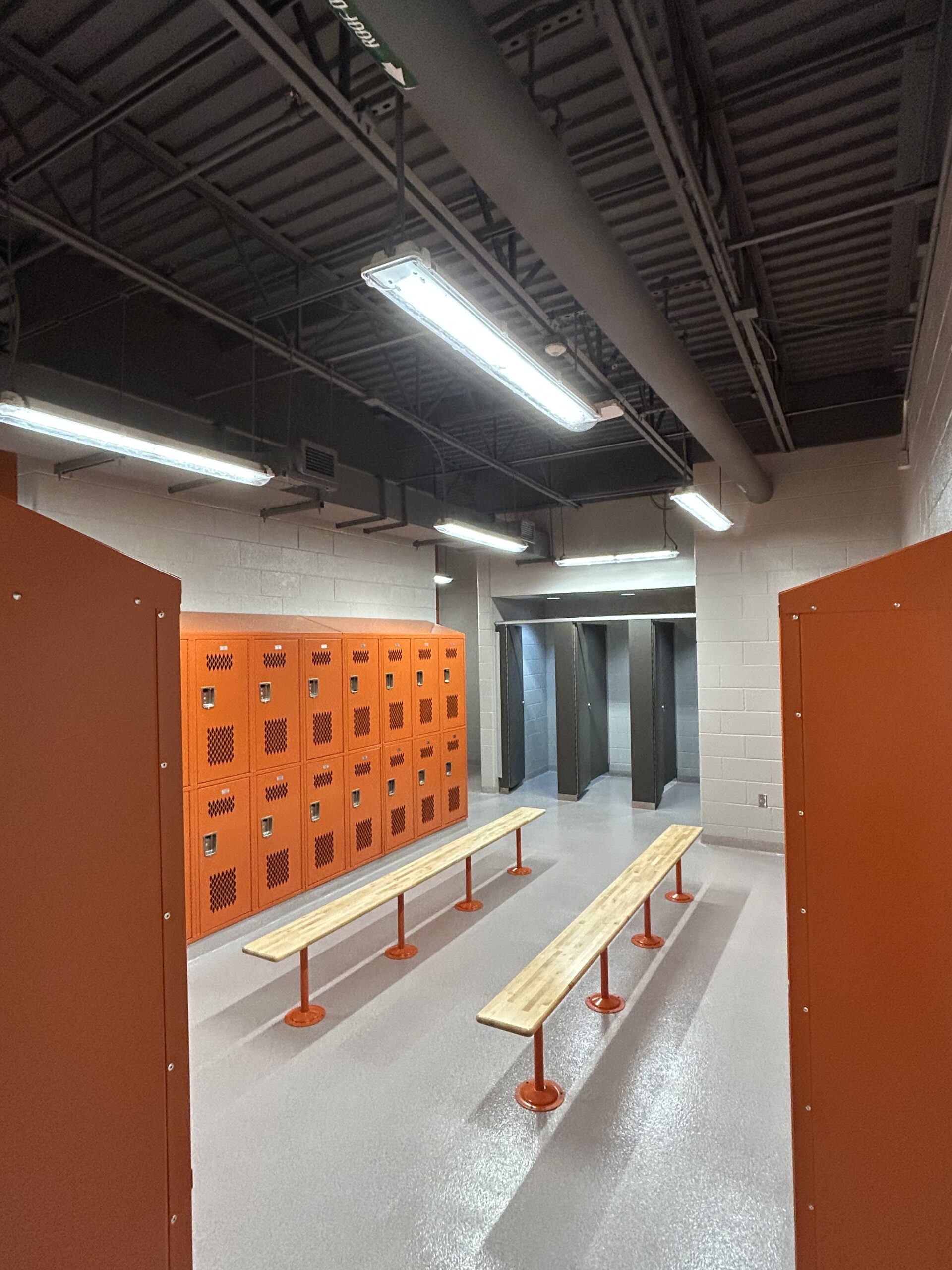





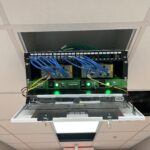


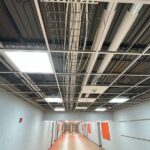

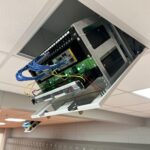



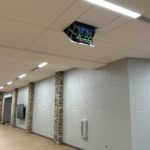
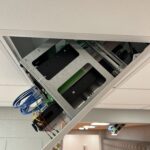

“I knew there had to be a better way to deploy the network that would prevent us from having to constantly upgrade equipment to meet the growing demands for high-speed connectivity and power,” says Hanshaw. “When I came across Sinclair Digital’s AGILE-CORE Distributed Edge Architecture, I saw an opportunity to deliver the technology that students need to succeed in the digital world while increasing power, saving space, and lowering costs.”
AGILE-CORE™ Distributed Edge Architecture is a modular, plug-and-play solution that distributes fiber optic connectivity and safe, low-voltage power, providing a highly scalable, future-proof IT network infrastructure that offers an efficient and cost-effective alternative to conventional network design. The AGILE-CORE system employs a hub-and-spoke design with StrandWise™ hybrid cables that distribute power and data from a centralized HEADEND to Edge IDFs. The AGILE-CORE HEADEND houses switches and servers for network support, centralized management and control, and other network functionality. Each Edge IDF comprises a prefabricated ceiling-mounted enclosure that includes all the necessary equipment to deliver high-bandwidth data and low-voltage PoE orUSB power to nearby spaces. Endpoint devices can be easily connected to the Edge IDFs via short copper cables to meet a variety of technology needs, including Wi-Fi, audiovisual (AV) systems, video surveillance, USB-C charging, public address(PA) systems, IoT sensors, and more.
One of the most innovative features of AGILE-CORE Distributed Edge Architecture is the use of intelligent fault-managed power (FMP). Adopted as Class 4 power in the 2023 National Electric Code (NEC), FMP efficiently delivers safe DC power over greater distances using transmitters and remote receivers to intelligently detect faults, providing superior protection from electric shock and fire initiation. By distributing low-voltage DC power throughout a school, the AGILE-CORE system eliminates the bulk of AC-to-DC conversion required to power electronics. AC-to-DC conversion can result in significant power losses of up to 30 percent and introduce distortions into power distribution systems.
“Power has been one of our biggest challenges, and we’ve had to replace more equipment due to power demand rather than the need for speed. Plus, AC-to-DC power conversion creates dirty power that can cause network equipment to fail,” explains Hanshaw. “With AGILE-CORE’s fault-managed power, everybody is safer, there is no risk of fire, and we have clean, reliable, and efficient DC power that doesn’t degrade our equipment, significantly reducing the frequency of equipment upgrades.”
“Having never used this technology before, we were able to deploy all the connections for a classroom in just four hours. This demonstrated the ease of installation and proved the system’s capability, ultimately validating that AGILE-CORE was the best choice for our new academic complex,” says Hanshaw. “As experts in distributed edge architecture, Sinclair Digital was the easy button in getting this project off the ground.”
The installation of AGILE-CORE Distributed EdgeArchitecture included a total of 39 Edge IDFs to deliver technology to classrooms, laboratories, auditoriums, gymnasiums, administration offices, and other spaces. Within each Edge IDF, FMP receivers and power distribution modules provide clean, safe DC power to fanless, ruggedized switches that offer silent operation and have an average lifespan of 20 years, compared to AC-powered switches with an average lifespan of just 5 years.
In the academic areas of the new complex, each Edge IDF supports the technology requirements for two classrooms, delivering Gigabit data transmission and PoE to high-throughput Wi-Fi 5 access points for student connectivity, 86-inch interactive classroom displays, advanced digital PA system with LED display and paging/intercom, VoIP phones and panic buttons and peripherals like printers and clocks.
“With each singlemode fiber pair capable of supporting 100 Gigabits and each copper pair delivering 600 Watts, our Edge IDFs provide a total potential of 300 Gigabits of bandwidth and 1800 Watts of power—enough for the infrastructure to last at least 50years,” explains Hanshaw. “The switches also have unused ports and available PoE capacity, providing immediate means for us to connect new devices.”
The AGILE-CORE Distributed Edge Architecture provides the new Richwood Academic Complex with a 50-year infrastructure without incurring significant costs. In fact, Hanshaw estimates that it delivered more than $1 million in savings compared to a conventional switched network design.
“By eliminating the need for IDF closets and long runs of cable bundles, AGILE-CORE Distributed Edge Architecture allowed us to reclaim enough square footage to accommodate three additional offices and two multipurpose closets,” says Hanshaw. Eliminating the IDF closets and associated equipment, power, and cooling also delivers an approximate 30% in energy savings.
Hanshaw points out that the AGILE-CORE system also delivers operational savings for years to come. “If we had used a traditional network design, we would have had 200 or more cables running down each hallway to provide connectivity to the classrooms. Now I have just five StrandWise hybrid cables that we won’t need to touch for at least 50 years,” he says. “My install costs are much lower, and moves, adds, and changes are fast and easy, requiring just a short patch cable from the Edge IDFs to power and connect a new device. That’s something we can do ourselves without needing to bring in outside electricians or technicians, which significantly reduces our long-term IT maintenance costs.”
While AGILE-CORE qualified for E-RATE funds and saved considerable construction, energy, and operational costs, Hanshaw believes this new approach to IT network design is also vital to making those dollars go further and providing the technology K-12 students need to develop crucial future-ready skills.
“I look at the AGILE-CORE Distributed Edge architecture as an insurance plan. The network will essentially pay for a refresh of student devices and give our educators and administrators more money to roll into innovative classroom technologies and school safety,” says Hanshaw. “AI is already here, and robotics is on the way. We need to keep up with the changes. If we don’t, our students will be at a disadvantage and fall behind the rest of the world. Thankfully, with AGILE-CORE, we’re more than ready for it.”